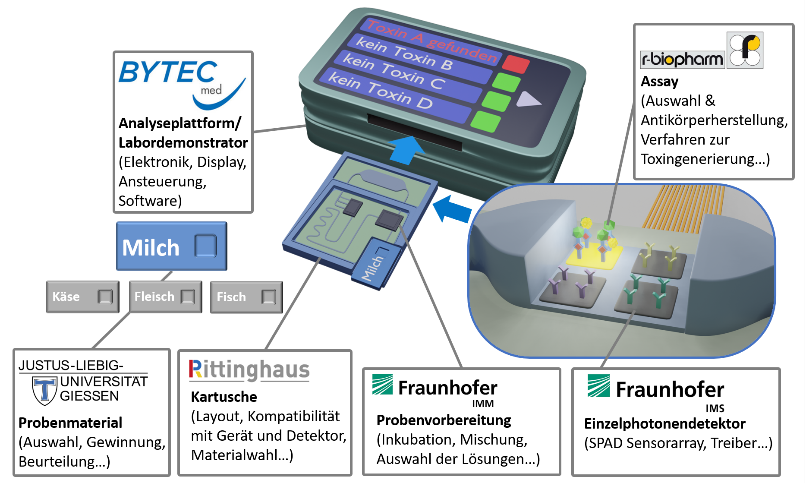Detecting bacterial toxins in food with single light particles
The BMBF-funded "PhoTox" consortium led by Bytec Medizintechnik GmbH is developing a compact analysis platform for rapid on-site detection of bacterial toxins in milk. The core innovation is a microchip with arrays of single-photon detectors that are so sensitive that single light particles can be detected.

At present, disease-causing bacterial toxins in food can only be detected by complex laboratory analysis. It often takes days until the result is available. Valuable time in which undetected contamination could induce harmful effect. The "PhoTox"-project aims to develop on a solution that will enable rapid and simple on-site testing without a laboratory infrastructure. This goal is achieved by combining microfluidic sample preparation, highly specific antibodies and an ultrasensitive photodetector on a cartridge. The detection principle here is based on a chemical reaction in which light is emitted when the toxins bind to the antibodies. Although this detection reaction is very specific and sensitive, the amount of emitted light is extremely low. The Fraunhofer IMS has a special solution: microchips with arrays of single-photon detectors, so-called single-photon avalanche diodes (SPADs), that are so sensitive that single light particles (photons) can be detected. Compared to conventional detectors with similar sensitivity, the SPAD array microchips are suitable for integration on the microfluidic cartridge in a space-saving assembly manner. Fraunhofer IMS is thus making a decisive contribution to the innovative on-site test system within the "PhoTox"-project. Five other partners from research (Fraunhofer IMM, Justus Liebig University Giessen) and industry (R. Biopharm AG, Ernst Rittinghaus GmbH, Bytec Medizintechnik GmbH) are involved in the project, that is funded by the German Federal Ministry of Education and Research (BMBF) with around 2.6 million euros.